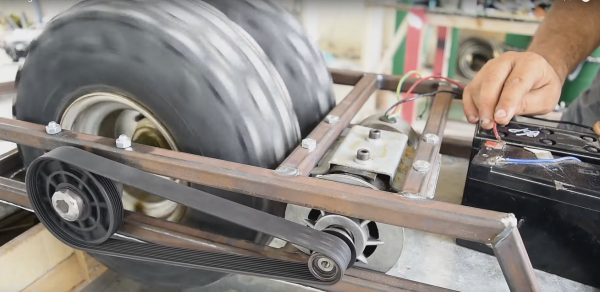Home-made transportation is a thriving area for makers to flex their skills. Looking to shorten their university commute, [doublecloverleaf] modded his penny board by adding a motor that can have him zipping along at 40 Km/h!
The electric motor is mounted to the rear truck and delivers power to the wheel gear using a HTD 5 m pulley belt. Finding the deck too flexible to mount the battery pack under, [doublecloverleaf] strengthened it with a pair of carbon-fiber tubes bracketed on the underside. A few custom PCB boards connect ten 5 Ah LiPo battery cells in series to create two, five-cell packs which are kept safe by a thick housing mounted between the board’s trucks. [doublecloverleaf] calculates that they could make up to a 15 km trip on a single charge.

















